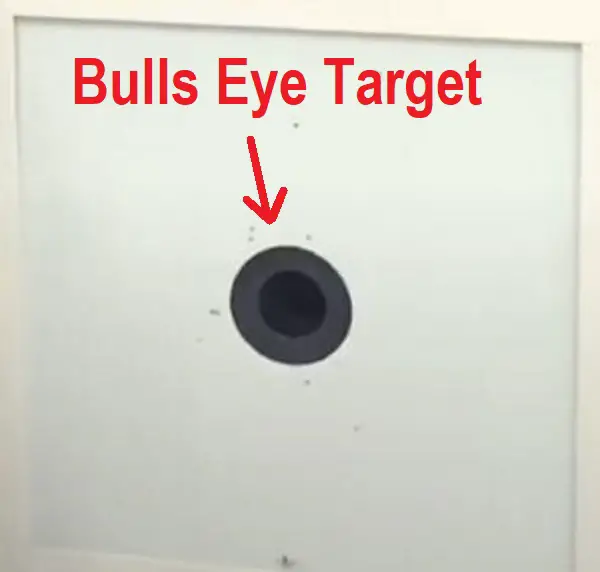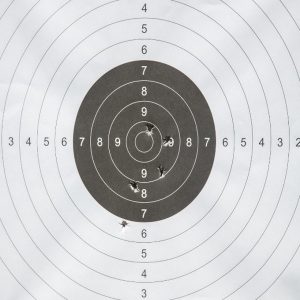Competing with air gun targets is a must! They come in standard shapes and sizes. The classic is a paper bullseye and techy light-up scoreboards. But is this all? Find out below.
Types of Air Gun Targets Used in Competition
Air gun competitions require accuracy and skill from marksmen, along with targets to shoot at. Let’s explore the different types of air gun targets used in these contests:
- Common targets – include standard paper or cardboard targets. These come in various sizes, shapes, colors, and designs, adding a level of challenge.
- Reactive targets – feature sensors that register each hit with light or sound.
- Knockdown targets – fall when hit by pellet guns.
- Spinner targets – rotate when hit and return to their original position.
- Clay pigeon targets – are disc-shaped aerial targets.
A reactive target boosts the shooter’s motivation and excites them about hitting bullseyes. Also, paper or cardboard backings protect surrounding objects and stop ricochets.
Below, we show which target designs suit different competitions, considering factors like shooting distance, type of ammo, and caliber size.
| Target Design | Competition Type | Distance (in feet) |
|---|---|---|
| Bullseye | Olympic Events / ISSF Matches | 10 m – 50 m |
| Silhouette | Field Target Shooting / Hunter Classes | 30 m – 60 m |
| Knockdown | Benchrest Competitions & Plinking | 10-100 yds |

We suggest investing in quality targets that meet the competition standard specs and inspecting the equipment before for any defects. Standardizing procedures among the shooting team helps in better preparation, resulting in better performance on range day.
Variables like distance range, difficulty levels, and patterns/texts on the target add an extra element to air gun competitions. To improve accuracy, choose lightweight pellets as they are less affected by wind or weather. Always handle equipment carefully to prevent damage.
Looks like the perfect air gun target for competition needs more than just a bullseye; a thick skin and a sense of humor too!
For more information on air gun targets, see The Different Types of Air Gun Targets.
Qualities of a Good Air Gun Target for Competition
For the air gun shooter, nothing is more important than a good target. When competing in tournaments, the right kind of targets becomes essential. Knowing the qualities of an appropriate air gun target for the competition is key.
The table below shows the essential qualities of an excellent air gun target for competitions:
| Qualities | Description |
|---|---|
| Durability | Must be strong enough to bear shots and bullets |
| Size | Must follow national & international regulations. |
| Material Composition | Must not affect accuracy. |
| Precision Metering | Must have different scoring areas. |
Air gun targets for competitions must be different from regular targets used for practice or games. They must provide testing for skills like steadiness, cadence, rhythm, and speed.
Air guns have been around since 15th century Europe. Nowadays, competitive shooting is popular worldwide. It brings new challenges, like how to make targets allowing shooters to show their expertise while keeping safety. Scoring systems can be complex, but aim for the bullseye and hope for the best!
Scoring Systems for Air Gun Target Competitions
Air gun target competitions have different scoring systems to rate the shooting capabilities of players. These systems are used to find the best shooter.
Here are some common scoring systems for airgun target competitions:
- Bullseye Scoring: Bullseye scoring is the most common scoring system used in airgun target competitions. It involves shooting at a circular target with concentric rings that are assigned point values. The shooter receives points based on the location of their shot within the rings of the target. The highest score is awarded for hitting the center bullseye.
- Knockdown Scoring: Knockdown scoring is used in competitions where targets are designed to fall over when hit. The shooter receives points for each target knocked down within a specified time period.
- Field Target Scoring: Field target scoring is used in competitions where targets are placed at various distances and angles in an outdoor setting. The shooter receives points based on the location of their shot within a designated area on the target. The highest score is awarded for hitting the designated target area.
- Silhouette Scoring: Silhouette scoring is used in competitions where targets are shaped like animals or other objects placed at different distances. The shooter receives points for hitting the designated target area on each silhouette.
Also, these scoring systems affect a player’s mindset. Some may be easy to understand but hard to execute, while others could be complex but rewarding.
Maintenance and Care for Air Gun Targets
Targets used for air gun shooting need regular maintenance and care. Here are tips to maintain them:
- Inspect before and after each use.
- Clean often with a soft cloth or sponge, and a mild cleaning solution.
- Store in a dry, cool place away from sunlight and moisture.
- Don’t put heavy objects on top of the targets.
- Replace paper targets after each use.
- Check the alignment of target holders or stands regularly.
Different types of air gun targets need specific care. Follow manufacturer recommendations for optimal maintenance.
Good maintenance is important for competitive shooters. They must be aware that small damage can affect their score. Caring for their air gun targets helps them hit the bullseye and win!
Conclusion
Having the right air gun target is crucial for a competition’s success. It affects the shots’ precision and accuracy, which, in turn, impacts scores.
- RWS Air Gun Shooter’s Gun Cleaning Kit and Targets Review - July 26, 2023
- Motanar .177/.22 4.5mm/5.5mm Air Rifle Barrel Cleaning Kit Review - July 26, 2023
- Raiseek .177 Cal & .22 Cal Airgun Cleaning Kit Review - July 26, 2023

